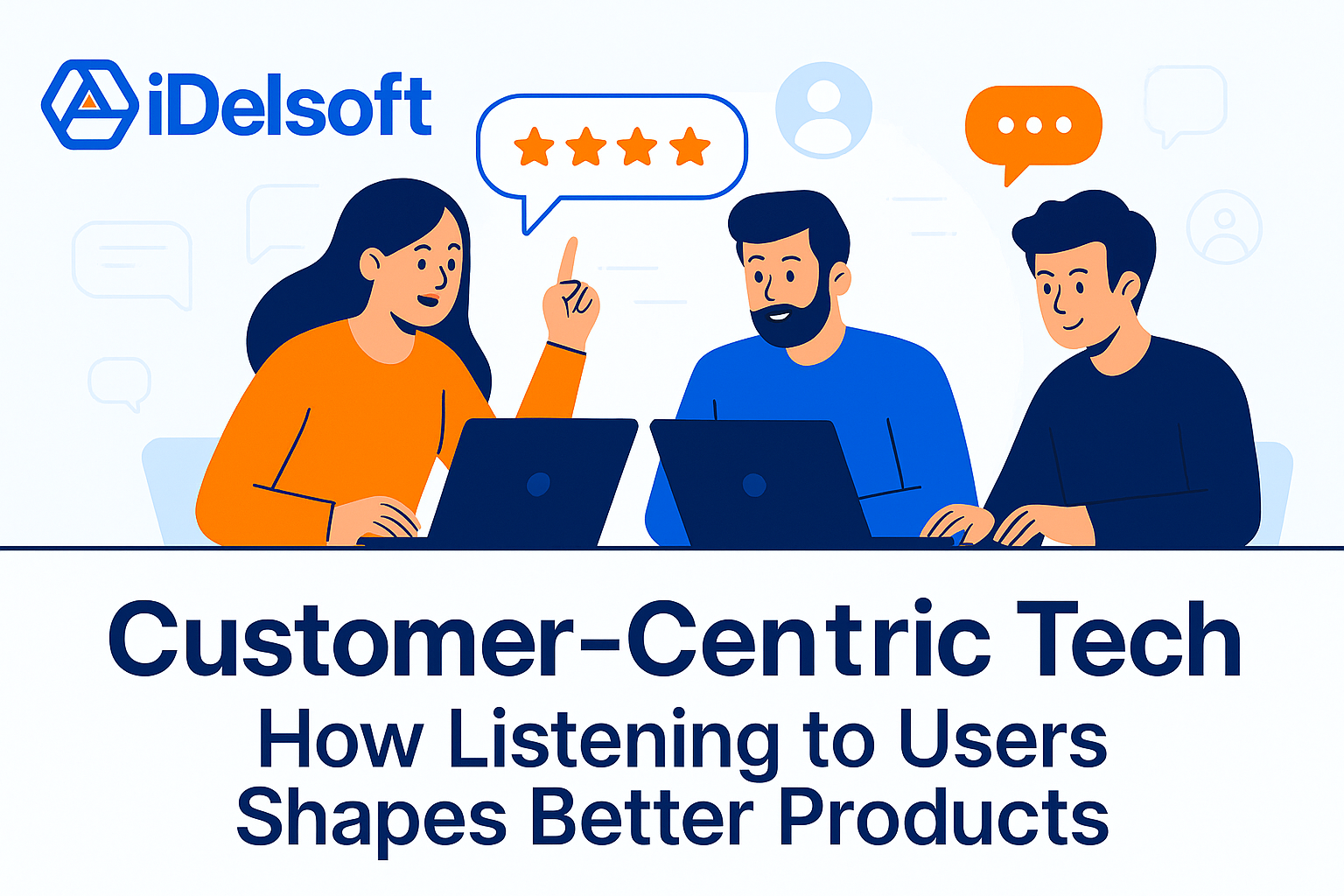Estimated reading time: 9–10 minutes
The best technology products don’t succeed because they’re the most innovative or technically advanced. They succeed because they solve real problems for real people. In today’s fast-moving digital market, user expectations evolve quickly, and companies that fail to listen risk losing relevance.
A customer-centric approach in tech is no longer optional — it’s the foundation of building products that resonate, retain users, and scale successfully. This article explores why listening to users matters more than ever, the risks of ignoring feedback, and practical strategies to embed customer-centricity into your product development cycle.
Table of Contents
1. Why Customer-Centricity Matters in Tech
Technology has shifted from being feature-driven to experience-driven. Users expect seamless interfaces, fast performance, and intuitive design. Products that fail to meet these expectations — no matter how “powerful” — rarely survive.
A PwC study found that 32% of customers will stop doing business with a brand they love after just one bad experience. In tech, where alternatives are only a click away, the stakes are even higher.
By prioritizing customer needs, companies not only create better products but also earn loyalty, advocacy, and long-term growth.
2. The Hidden Costs of Ignoring User Feedback
When companies don’t listen to users, the consequences pile up:
- High churn rates: Customers abandon products that don’t fit their needs.
- Wasted resources: Teams build features no one uses.
- Reputation damage: Negative reviews and word-of-mouth spread quickly.
- Lost competitive edge: Competitors who listen will deliver what users actually want.
We highlighted a similar theme in The Hidden Costs of a Bad Developer Hire — unseen problems often cost more in the long run than leaders realize. Ignoring users works the same way: invisible at first, disastrous later.

3. How Listening to Users Shapes Better Products
Actively gathering and applying user feedback leads to:
- Improved UX: Understanding pain points helps refine interfaces and interactions.
- Product-market fit: Real user insights reduce the guesswork in feature design.
- Innovation from the ground up: Customers often suggest use cases teams never considered.
- Higher retention: When users feel heard, they’re more likely to stay engaged.
As Forbes explains, user feedback isn’t just helpful — it’s essential for creating software that truly works for customers.
4. Common Mistakes Companies Make with Feedback
Not all listening is equal. Many companies fall into traps like:
- Collecting but not acting: Gathering data but ignoring it in roadmaps.
- Over-indexing on loud voices: Letting a vocal minority dictate direction.
- Poor timing: Asking for feedback too late, after major investments are locked.
- Focusing only on quantitative data: Metrics matter, but they must be paired with qualitative insights.
Building the wrong features based on shallow or misinterpreted feedback can be just as damaging as ignoring feedback entirely.

5. Practical Strategies for Customer-Centric Development
Embedding customer-centricity means making user voices part of the development DNA:
- Continuous feedback loops: Collect insights early and often, not just at launch.
- User testing at every stage: Validate prototypes, not just finished products.
- Cross-functional collaboration: Engineers, designers, and product managers should all engage with users.
- Transparency with customers: Show users how their feedback shapes updates — it builds trust.
These strategies echo lessons from The Impact of UX/UI Design on User Retention and Conversion, where design aligned with user needs led directly to higher engagement.
6. The Future of Customer-Centric Tech
The rise of AI, real-time analytics, and personalization tools will make customer feedback loops faster and more powerful. Companies that combine these tools with genuine listening will create products that feel intuitive, adaptive, and irreplaceable.
Customer-centricity is not just a philosophy — it’s a competitive moat. As tech markets saturate, the companies that win will be those that build with their users, not just for them.
Looking to scale more efficiently? Connect with iDelsoft.com! We specialize in developing software and AI products, while helping startups and U.S. businesses hire top remote technical talent—at 70% less than the cost of a full-time U.S. hire. Schedule a call to learn more!





